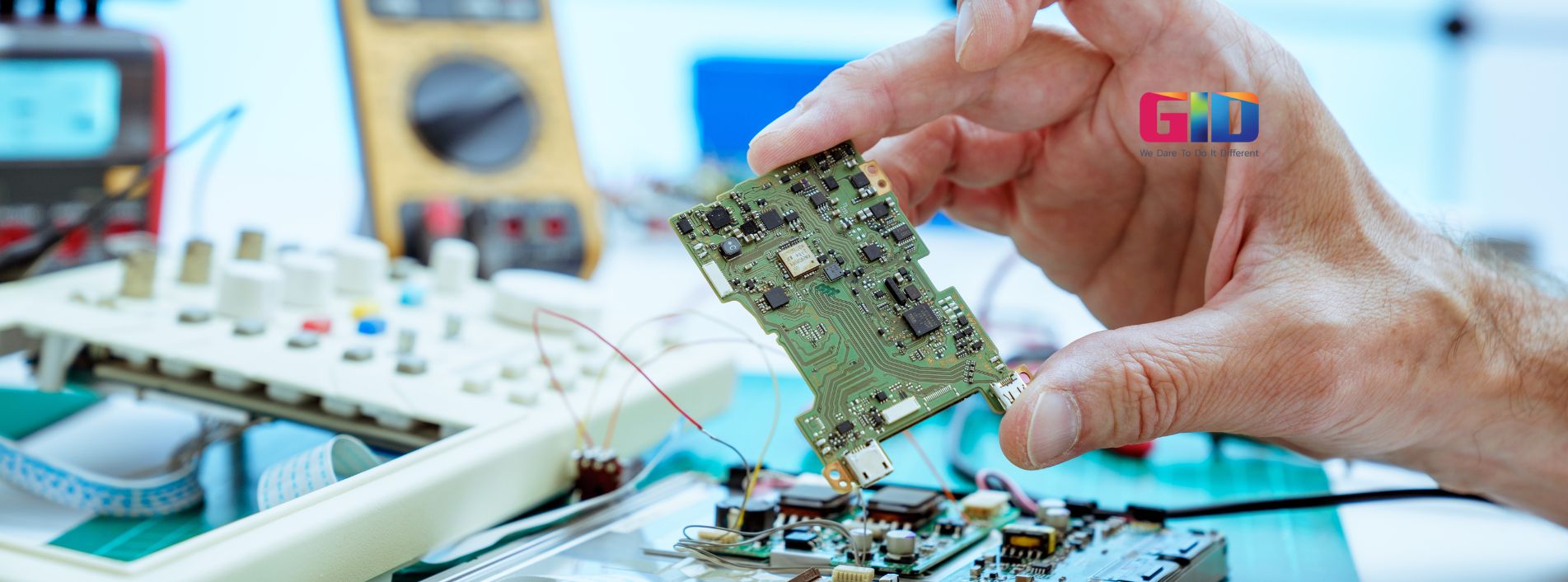Electronic Product Development Process
In today’s fast-paced technological landscape, creating an innovative electronic product isn’t just about having a groundbreaking idea it’s about meticulously guiding that idea through the electronic product development process. Whether you’re based in tech hubs like Silicon Valley, the manufacturing heartlands of Texas, or innovative regions in California, this process transforms raw concepts into market-ready products, blending creativity with engineering precision.
Understanding the intricacies of the electronic product development process is essential for businesses across the U.S., from startups to established companies looking to expand their product lines. For those in need of expert guidance, partnering with a seasoned development firm like GID Company, with experience in regions like Southern California, can make all the difference.
The First Step of the Electronic Product Development Process
The electronic product development process begins with ideation—a critical stage where creativity meets strategy. In this phase, your primary goal is to generate innovative ideas that can solve real-world problems or meet emerging market needs. Start by brainstorming within your team, leveraging diverse perspectives to fuel creativity. Engage with potential users, gather feedback, and observe market trends to identify gaps that your product could fill.
Market research plays a pivotal role in validating these ideas. By analyzing competitors, assessing customer pain points, and studying industry trends, you gain insights into what works and what doesn’t. This research helps you refine your ideas and ensures they align with market demands, setting a solid foundation for the subsequent stages of the electronic product development process. At GID Company, we emphasize the importance of thorough market analysis, ensuring your product ideas are not only innovative but also market-ready, reducing the risks associated with new product launches.
Remember, the success of your product hinges on its ability to meet customer needs better than existing alternatives. Therefore, thorough market research is non-negotiable—it guides your electronic product development process and maximizes your chances of creating a product that resonates with your target audience.
Product Definition and Planning
The next crucial step in the electronic product development process is product definition and planning. Here, the initial ideas are transformed into a detailed blueprint that outlines the product’s key features, functionality, and overall design. Whether you’re operating in the fast-paced markets of New York, the tech-forward environment of Arizona, or the innovative landscape of California, effective planning is essential to keep the development process on track.
Developing a system block diagram at this point is invaluable—it provides a visual representation of how different components of the product will interact, ensuring a cohesive design. In the electronic product development process, partnering with experts like GID Company, especially if you’re in the Southern states like Texas or Florida, can streamline this phase, ensuring your plan is both realistic and aligned with market demands.
A well-defined product not only sets clear expectations for the development team but also helps in anticipating potential challenges. This stage lays the groundwork for the following phases of the electronic product development process, ensuring that each subsequent step is executed with precision.
Design and Architecture
Once the product definition is solidified, the electronic product development process moves into the design and architecture phase. This is where your product starts to take shape, both conceptually and physically. The process begins with creating a detailed schematic circuit diagram, which serves as the technical backbone of your product’s electronic components. This diagram needs to be meticulously crafted, as even a small error can lead to significant issues later on.
Following the schematic design, the focus shifts to the printed circuit board (PCB) design. The PCB is the physical board that houses and connects all electronic components. It’s critical to ensure that the PCB design adheres to industry standards and passes all necessary validation checks. This is where having a partner like GID Company can be advantageous. Their expertise ensures that your design is not only functional but also optimized for manufacturability and cost-effectiveness.
Creating a proof of concept (PoC) is another vital aspect of this phase. The PoC serves as an early prototype development to test the feasibility of the product design. It allows you to identify any potential issues before moving on to full-scale development, thereby saving time and resources in the long run. This iterative approach is a cornerstone of the electronic product development process, ensuring that each design decision is validated and refined before advancing.
Prototyping and Testing
Prototyping is where the abstract ideas and designs from earlier stages of electronic product development become tangible. The first step is to create a physical prototype based on the finalized design. This prototype will closely resemble the final product, allowing you to evaluate its functionality, usability, and overall performance.
Testing the prototype is crucial to identifying any flaws or areas for improvement. This stage often involves rigorous testing of the electronic components, such as the microcontroller and other integral parts, to ensure they function as intended. Debugging is a key part of this process, requiring careful attention to detail to resolve any issues that arise. GID Company’s development team excels in this area, providing expert debugging and testing services that help refine the product until it meets all necessary criteria.
The evaluation phase follows, where the prototype is assessed against the original design specifications and user expectations. Feedback gathered during this stage is instrumental in making final adjustments before moving on to full production. Electronic product development is iterative by nature, and the insights gained during prototyping and testing are essential for ensuring that the final product not only meets but exceeds market standards.
Read Also: Product Prototype Development Company
Pre-Production and Manufacturing
As the electronic product development process progresses, the focus shifts from design and prototyping to pre-production and manufacturing. This stage is critical because it transforms your tested prototype into a product ready for mass production. The first step in this phase is to conduct a pilot production run. This involves creating a small batch of the product to test the manufacturing process, ensuring that it can be scaled effectively without compromising quality.
Cost estimation is another essential aspect of pre-production in the electronic product development process. You need to calculate the total cost of materials, labour, and overhead to determine the product’s final cost. This is where the bill of materials (BOM) comes into play, listing all components and their respective costs. By working closely with suppliers, you can optimise these costs and identify potential savings. GID Company’s expertise in managing these relationships ensures that you get the best materials at competitive prices, keeping your project within budget.
Once the pilot run is successful and costs are aligned with financial goals, you can proceed to full-scale manufacturing. At this stage, quality control becomes paramount. Every unit produced must meet the strict standards set during the earlier phases of the electronic product development process. By maintaining rigorous quality checks, you ensure that the final product will perform reliably in the hands of consumers.
Product Launch and Post-Launch Review
The final stage of the electronic product development process is the product launch, where your product is introduced to the market, whether it’s the competitive arenas of California, the booming tech sectors in Utah, or the manufacturing centers in Georgia. A successful launch requires meticulous planning and execution. It’s important to coordinate with marketing and sales teams to ensure that your product reaches the right audience, whether they’re in urban areas or more localized markets across the Southern states. GID Company can assist with strategies that align your product’s introduction with regional market demands, increasing the likelihood of a strong market reception across diverse locations.
In addition to a strong marketing push, it’s crucial to have a solid distribution strategy in place. Whether your product is sold online, in stores, or through a combination of both, making it easily accessible to your target market is key to a successful launch. GID Company can assist with strategies that align your product’s introduction with market demands, increasing the likelihood of a strong market reception.
Post-launch, the electronic product development process continues with a review phase. Gathering customer feedback and monitoring the product’s performance in the market allows you to identify any issues that need addressing. This feedback is invaluable for making iterative improvements or planning future versions of the product. Regular reviews ensure that your product remains competitive and continues to meet consumer expectations. With GID Company’s support, you can navigate this final phase with confidence, knowing that your product is not only launched successfully but also poised for long-term success.
Conclusion
Navigating the electronic product development process from start to finish requires careful planning, precise execution, and a commitment to quality at every stage. Whether you’re a startup or an established business, following a structured approach ensures that your product not only reaches the market but does so with a competitive edge. Partnering with an experienced firm like GID Company can provide the expertise and resources needed to turn your innovative ideas into successful products. As you embark on your next development project, remember that the right process, backed by the right team, is the key to transforming your vision into reality.
Read Also: We Can Help With Concept Development

















